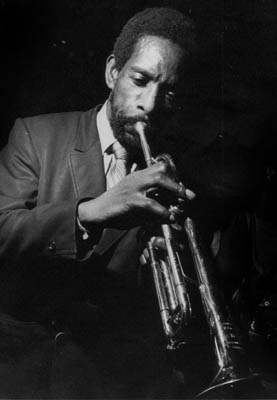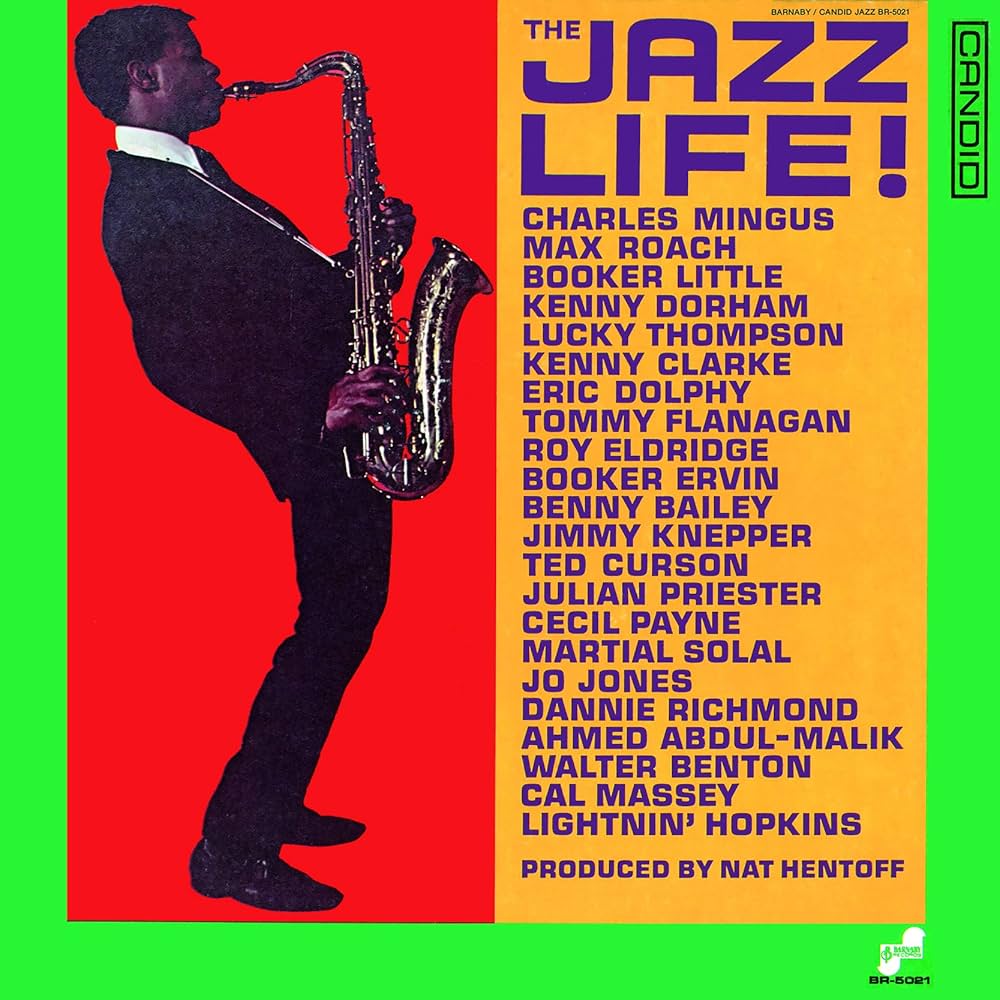Oh Yeah, Oh Yeah – Kenny Dorham
A bouncy 3/4 song in a gospel style—though not without Kenny Dorham’s signature harmonic detail. The recorded arrangement, for an unusual piano-less septet lineup, is available with Full Score, recorded parts and alternate parts.
- Recording: Max Roach - The Jazz Life!
- Recorded on: November 1, 1960
- Label: Candid (CJM 8019)
- Concert Key: F
- Vocal Range: , to
- Style: 3/4 Gospel (medium)
- Trumpet - Kenny Dorham, Benny Bailey
- Trombone - Julian Priester
- Tenor Sax - Walter Benton
- Bari Sax - Cecil Payne
- Bass - Peck Morrison
- Drums - Max Roach
Video
- Description
- Historical Notes
- Solos
- Piano Corner
- Bass Corner
- Drum Corner
- Guitar Corner
- Inside & Beyond
- Minus You
Oh Yeah, Oh Yeah is Kenny Dorham’s take on the gospel side of soul-jazz. It’s a medium 3/4 song with a bouncy rhythmic feel, a bit like Bobby Timmons’ This Here though at a more relaxed tempo. The main theme contains its own call-and-response, with the drums filling in the “response” after the repeat of the “call.” Though the changes are relatively straightforward in a gospel vein, there’s plenty of K.D.’s inimitable, subtle detail such as a few hip “side-slips” at the end of the head. The form of the head is 64-measure AABC, but the bridge is not part of the solo form. Instead, solos are on the two A sections with their first and second ending. After the last soloist on the form, an eight-measure drum solo sets up the out melody.
About the arrangement: Full Score and parts are available for the recorded arrangement, for 5 horns, bass, and drums. The lead sheet is also the first part. Besides the instrumentation from the recording, we have alternate parts so that it can be played with a 5-piece sax section (2 altos, 2 tenors, and baritone). The horns play in octaves on the “call” of the melody and harmonize for the “response.” In some places there are only three-part harmonies, with two unison horns on each harmony note below the trumpet melody. The bridge goes to trumpet and tenor only, playing two-part harmonies with the rest of the horns filling in only on the 7th and 8th measures.
About the arrangement: Full Score and parts are available for the recorded arrangement, for 5 horns, bass, and drums. The lead sheet is also the first part. Besides the instrumentation from the recording, we have alternate parts so that it can be played with a 5-piece sax section (2 altos, 2 tenors, and baritone). The horns play in octaves on the “call” of the melody and harmonize for the “response.” In some places there are only three-part harmonies, with two unison horns on each harmony note below the trumpet melody. The bridge goes to trumpet and tenor only, playing two-part harmonies with the rest of the horns filling in only on the 7th and 8th measures.
This is the only song recorded with this septet personnel, an expanded version of Max Roach’s quintet. The compilation “The Jazz Life!” also includes tracks by Charles Mingus, Lightnin’ Hopkins, Cal Massey and Lucky Thompson (Lord, Lord, Am I Ever Gonna Know?). Other songs from the November 1, 1960, session were issued on another Candid compilation, “Newport Rebels”—referring to the alternate festival in Newport, Rhode Island, earlier that year which Mingus and Roach organized as a reaction to the increasingly commercial Newport Jazz Festival. One of these “Newport Rebels” tracks features Kenny Dorham on piano accompanying vocalist Abbey Lincoln.
Related Songs
Email Send Oh Yeah, Oh Yeah to a friend
Send this page to a friend via email. Add your name or email in the first field. In the second, add one or more email addresses, separated by a comma.

Kenny Dorham
August 30, 1924 – December 15, 1972
August 30, 2025, is Kenny Dorham's 101st birthday: jazzleadsheets.com has added many new K.D. compositions. Jazz At Lincoln Center has dedicated three late-night sets to Kenny's music, played with love by young musicians who want his music to live on. Join in, play K.D. music! Read more...
There was a problem.
...

